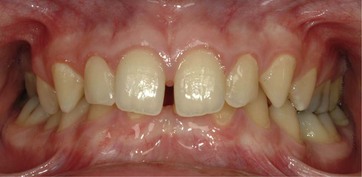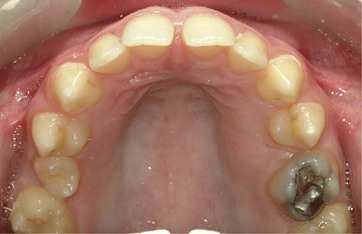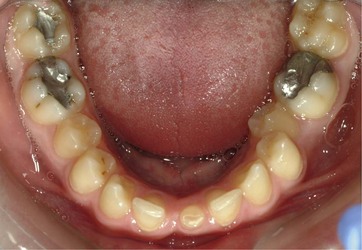23 High caries risk adolescents
Summary
Peter is 13 years old. He is concerned about the appearance of his teeth, especially the spaces between his front teeth and would like this improved (Fig. 23.1). He is not very keen on the prospect of complex restorative or orthodontic treatment. On presentation he is diagnosed as high caries risk. How would you plan treatment for this patient focusing initially on preventive care?
History
Complaint
Peter attends your surgery for the first time in a number of years. He advises you he would like the spaces between his front teeth corrected (Fig. 23.1).
Examination
Intraoral
Peter’s oral hygiene is not ideal. Normal saliva levels are noted. He is in the permanent dentition with missing lower central incisors and a retained lower left primary central incisor. His upper right first permanent molar has been extracted and the upper and lower first permanent molars and lower right first and second molars restored. No fissure sealants are present. There is evidence of mild buccal crowding in the lower arch with lower left second permanent premolar lingually placed. The lower left primary central incisor is retained and both lower permanent central incisors missing (see Figs 23.2 and 23.3).
 What further aspects of the clinical presentation help determine caries risk?
What further aspects of the clinical presentation help determine caries risk?
For a full list of caries risk factors, see Chapter 22, Table 22.1. This will help build up a picture of caries risk and formulate a prevention plan that is tailored to the patient’s requirements.
Fluoride history
Stay updated, free dental videos. Join our Telegram channel

VIDEdental - Online dental courses







 What further questions would you ask Peter to complete his caries risk assessment?
What further questions would you ask Peter to complete his caries risk assessment?